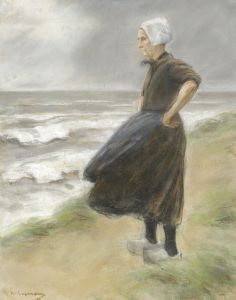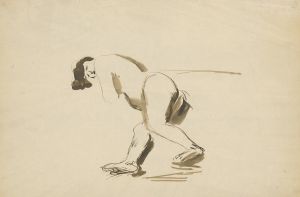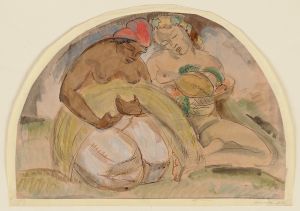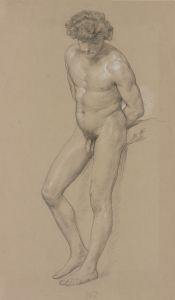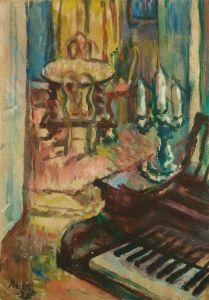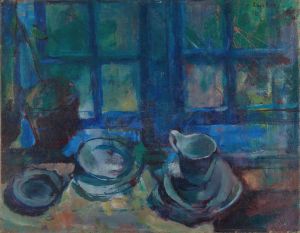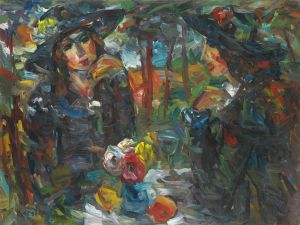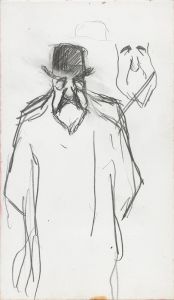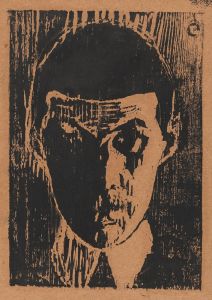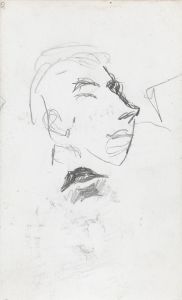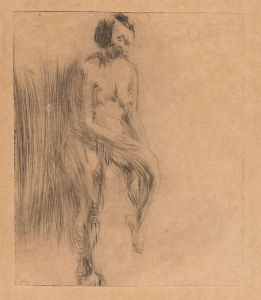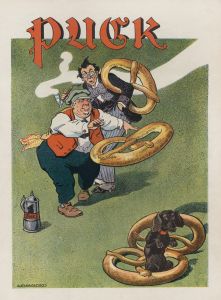
Stående kvinneakt
A hand-painted replica of Ludvig Karsten’s masterpiece Stående kvinneakt, meticulously crafted by professional artists to capture the true essence of the original. Each piece is created with museum-quality canvas and rare mineral pigments, carefully painted by experienced artists with delicate brushstrokes and rich, layered colors to perfectly recreate the texture of the original artwork. Unlike machine-printed reproductions, this hand-painted version brings the painting to life, infused with the artist’s emotions and skill in every stroke. Whether for personal collection or home decoration, it instantly elevates the artistic atmosphere of any space.
Ludvig Karsten was a Norwegian painter known for his expressive use of color and dynamic compositions. One of his notable works is "Stående kvinneakt," which translates to "Standing Female Nude." This painting exemplifies Karsten's mastery in capturing the human form with a vivid and emotive palette, a hallmark of his artistic style.
Karsten was born on May 8, 1876, in Oslo, Norway, and became a significant figure in the early 20th-century Scandinavian art scene. He was associated with the Expressionist movement, which sought to convey emotional experiences rather than physical reality. His work often featured bold colors and loose brushwork, characteristics that are evident in "Stående kvinneakt."
"Stående kvinneakt" is a testament to Karsten's ability to blend traditional subject matter with modernist techniques. The painting depicts a nude female figure standing, rendered with a fluidity and vibrancy that captures both the physical presence and the emotional essence of the subject. Karsten's use of color is particularly striking; he employs a rich palette that imbues the figure with a sense of vitality and immediacy. The background is often less detailed, serving to highlight the central figure and draw the viewer's attention to the interplay of light and shadow on the human form.
Karsten's approach to the nude was influenced by both classical traditions and contemporary movements. While the subject of the nude has a long history in Western art, Karsten's interpretation is distinctly modern. He was inspired by the works of Edvard Munch and other contemporaries who were pushing the boundaries of how the human body could be represented in art. This influence is evident in the way Karsten captures not just the physicality of the figure but also an emotional depth that invites viewers to engage with the painting on a more personal level.
Throughout his career, Karsten faced both acclaim and criticism. His bold style was not always appreciated by the more conservative art critics of his time, but he gained a following among those who valued innovation and emotional expression in art. "Stående kvinneakt" is a reflection of his commitment to exploring new artistic frontiers and challenging conventional norms.
Karsten's work, including "Stående kvinneakt," continues to be studied and appreciated for its contribution to modern art. His paintings are housed in various collections, and his influence can be seen in the works of later artists who sought to capture the complexities of the human experience through color and form.
In summary, "Stående kvinneakt" by Ludvig Karsten is a significant work that showcases the artist's skill in combining traditional subject matter with modernist techniques. Through his use of vibrant color and expressive brushwork, Karsten captures the essence of the human form in a way that is both innovative and deeply emotive. His contributions to the art world remain influential, and his works continue to be celebrated for their boldness and emotional depth.





